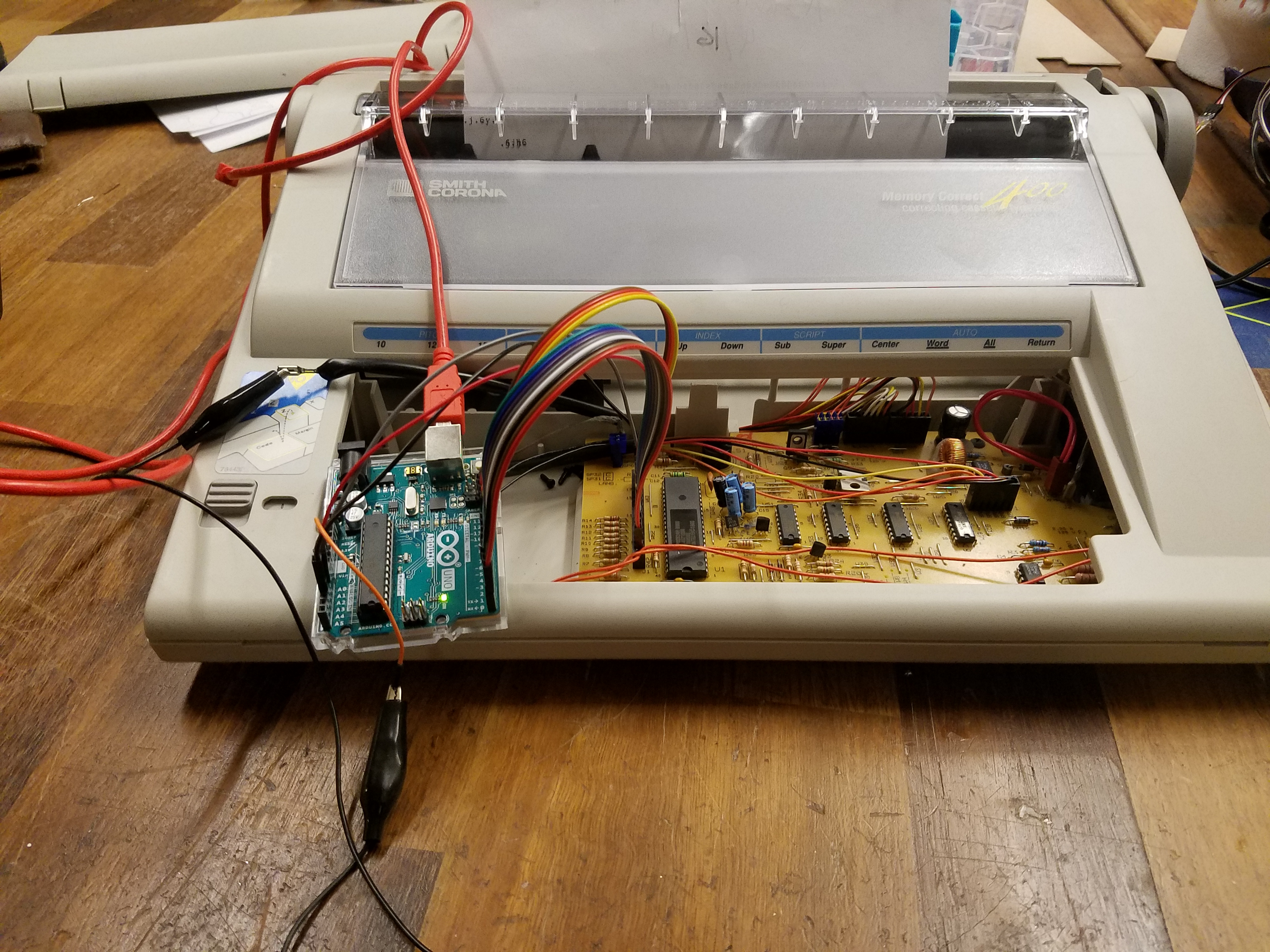Prototypes 3: The Final Entry
Technical
For this set of prototypes, I looked further into how to hook up an Arduino to my typewriter. At first, I tried to set up a matrix assuming that one of the pins was for power and ground. Assuming this, I wrote out the matrix for the lettering as matric in Arduino. This wouldn’t work and I will likely move others to a four-pin output.
An additional note about this is that there are several keys – SHIFT, CAPS LOCK, and CODE – that need to be pressed in conjunction with another key in order to work.

This didn’t work as the keyboard was mostly mechanical and half of the pins were actually grounds. I switched over to using transistors. Given the number of transistors needed – at one per key, I looked into buying PCBs and how I would wire up the 30 transistors and pins needed. I ran into additional problems as the 1980’s typewriter’s ground was in the back of the machine and not built as a pin into the IC.
The code to run this was fairly easy. The one problem was testing how long the button should be pressed in order to only output one keystroke. I found the system works between 50 and 300 ms but 1s will fire multiple times and 10ms will not fire the key.
I started to learn EAGLE and other CAD software to create a keyboard that could be attached to an Arduino. this PCB would have
If I was to use a regular Arduino I could add an increased number of transistors and create a binary code to switch between various numbers. This would require more coding than is totally necessary.
Role
I also worked a bit on the role of the projects. Beyond just being an art installation, I thought some more about where it would sit and what sort of people would be near it. If I were to install it in a nearly silent gallery, the generator would not always have a large enough corpus to read from and would start to spit out very generic poems based on the starting corpus. Conversely, if I put the machine in too loud of a place, the ambient noise would be too distracting for the machine to run and complete sentences could not form in the corpus.
Thinking more about the statement of the machine, I looked into putting the project in an open mic night and having the poem create a meta-poem about the night. Alternatively, I could read the poem as my own at the end of the night and see if I could pass it off as the genuine proof of human emotion.

